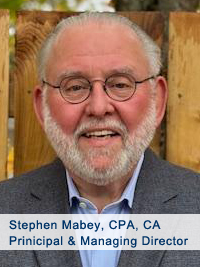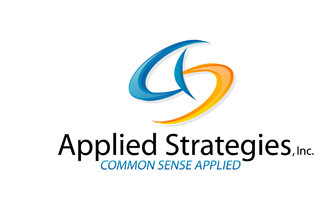Law Firms' Parallel Phases During the CoronavirusYou never let a serious crisis go to waste. And what I mean by that it's an opportunity to do things you think you could not do before.Will the COVID-19 crisis be the catalyst required for meaningful change in the legal industry? Will law firms transition through the four phases of the pandemic and go through a fundamental transformation, or will they revert to their old ways once we are over the peak of the curve? As any skilled leader knows, you never waste a crisis. Now is the time to adapt and make the necessary changes to an outdated business model. The transition should be from one that is mainly law–firm centric to a more client–centric model. The winners in the post–COVID-19 economy will be those who see the crisis as an opportunity for systematic change. George F. Colony, Chairman and CEO of Forrester Research in a recent blog identified the following four phases of COVID–19:1 Phase One (Infection) – In this period, there was no social distancing and no active management — the virus was passing quickly, at a "one infected person infects two people" rate; Phase Two (Social Distancing) – We will see infections peaking in late April or early May. At the same time that the number of infections is increasing, social distancing will pay off as the number of new infections will begin to decline in late April and then begin to plummet in early May; Phase Three (Management) – Pandemic Management Protocols (PMPs), ways of working, traveling, congregating, eating, moving, and connecting, will have to be constructed and maintained by governments, companies, schools, and all organizations in society. There will be new breakouts of infection, but with improved public health response, availability of tested antivirals, and near–universal quick testing, they will be managed and curtailed. As part of their PMPs, companies and other organizations will have to build their logistical systems — vetting people before they enter office buildings, carefully monitoring and managing their workforce's health and condition, and limiting travel and gatherings; and Phase Four (Eradication) – will occur as a vaccine becomes available. Mr. Colony, in his blog, stresses how mission–critical the handling of Phase Three will be to contain the economic crisis that has been brought on by COVID–19: "If Phase Three is mismanaged by companies, states, and the federal government, we will not drop back to Phase Two — we will loop back to Phase One and start the process from the beginning. This will risk a year–long disruption of the economy rather than the three–month disruption caused by Phase Two." Not surprisingly, law firms should be dealing with similar phases. Phase One – (Cost Savings) – During the first phase of the crisis, law firms pursue time–honored traditions when faced with a financial challenge, including:
Many of the above are necessary cost–saving measures; however, they are all reactionary financial tools. During this phase, all firms are looking to see what others down the street are doing. Most lawyers prefer precedent over innovation and are reluctant to be the first to implement an original idea. A glimpse into the obvious is that none of these "changes" go to creating change in the way that law firms deliver legal services or recognize how legal services will be consumed. Phase Two – (Telecommuting) – "Business needs to be able to assess its legal obligations and exposures, and strategically align technology, systems, and processes to enable simple things like finding and analyzing legal contracts quickly and efficiently, rather than relying on the human capital of its internal or external lawyers. It will help drive the transformation of the 'operating model' for the delivery of legal services – from the way teams are structured, how they operate, and the architecture of systems and tools that support the delivery of services".2 Clients were already becoming increasingly comfortable in dealing with their professional service providers virtually. The pandemic required law firms to provide more services electronically – from client meetings to discoveries and mediations. Clients realize that it is an efficient and cost–effective method and will soon become many clients' preferred way of dealing with lawyers. The judiciary is not known as agents of change. While they may have left the legal profession for a "higher calling," they are lawyers by training and, therefore, not naturally embracers of change. However, the courts will have to react to the likely backlog that will be created by the virus. Video conferencing, including participants from home, will be a viable means of processing non–criminal court hearings that eventually the courts' denial is not sustainable.
The benefits of telecommuting go beyond video conferencing. The legal industry must now embrace the same technologies other industries have been leveraging for years. These changes speak to a shift in both the consumption and delivery of legal services from the client's perspective. Phase Three – (New Client Matter Management Protocols – CMMPs) – The forced exposure to cloud computing has and will open many firms' eyes to its benefits, including the ease of transition from office to home computing. Many law firms have been in a "learn as you go" process when it comes to computing from home. Unfortunately, it has been in the midst of a crisis, and so the best in class CMMPs have not been fully developed and institutionalized. If this change in delivery and consumption is to work at the desired levels, law firms need to establish protocols dealing with various issues, including:
It is a given that working from a remote location will not be for all, and some lawyers will feel more comfortable working in an office–like environment. Physical offices will continue to exist, but many renewals will be for less square footage. A significant secondary required protocol that will result from home computing is a change in the makeup of the complement of professionals in many firms. Embracing home computing will enable firms to more fully access contract/part–time lawyers, thereby lowering overhead and perhaps even the number of full–time lawyers. Another new protocol to be developed will deal with rethinking staffing requirements. Remaining personnel must be cross–purposed based on changes in demand patterns. Gone are the days of life–long assistant lawyer relationships. Assistants must be viewed as a resource of the firm, moving throughout the organization and supporting different practice areas.
Working from home (WFH) has accelerated the introduction of new protocols, and lawyers must learn to be more self–sufficient and learn new software applications. Even those who in the past were resistant to technology understand the importance, as they have no other alternative to do their work. Will we continue along this path or revert to the old ways, once we return to the office? As stated in the Forrester Research, Phase Three is mission–critical. Inadequately executed, a firm will loop back to Phase 1 and start the cycle all over again – cost–cutting measures, and back to WFH. That is, for those firms that make it to Phase Three, and some firms won't. Currently, many firms do not have the governance models equipped to deal with making crisis–based management decisions, nor do they have the financial health to weather the first two phases of the pandemic. Phase Four – (Permanent Change) – "Legal problems" have become "business challenges that raise legal issues." The complexity, speed, and new risk factors impacting business—together with the impact of the global financial crisis, technological advances, and globalization—have changed the legal buy/sell dynamic. Law is undergoing a gradual, systemic transition from a labor–intensive, provincial–by–design, lawyer–centric "practice" model to tech and process–enabled, capitalized, global, scalable, efficient, multidisciplinary delivery model aligned with consumer needs and expectations. Lawyers are an integral element of that process, but they are not always "the straw that stirs the drink."3 Our advice to the legal profession is if you don't like change, you are going to like irrelevance even less! Don't "waste this crisis" by making only reactionary decisions. Now is the time to innovate and to be pioneers in establishing the "new normal." Unfortunately, given the number of traditionalists that populate the legal profession, many law firms will continue to:
In the words of the late John F. Kennedy, "Change is the law of life. And those who look only to the past or present are certain to miss the future."
Mia Hempey, MBA, is the Chief Executive Officer of Nelligan Law. Before joining the firm, Mia was president of ctc TrainCanada, recognized as one of the largest corporate training providers in Canada. She also founded and was president of CTE Solutions, a local technology training company, which she later sold to a national training business. Mia also held various senior management positions at high–tech companies in the region. In 2009, Mia received the "Businesswoman of the Year – Entrepreneur" award from the Women's Business Network of Ottawa, and in 2005 she was the recipient of the Ottawa Business Journal's "40 Under 40" award. Mia graduated from the University of Ottawa with a Masters of Business Administration, Telfer, (2007), and a Bachelor of Commerce (1993). Stephen Mabey is a CPA, CA and the Managing Director of Applied Strategies, Inc. Stephen's focus is on law firms in general and on small to medium size law firms in particular. He has written about and advised on, a wide range of issues including – leadership, business development, marketing, key performance indicators, strategic planning, mergers, practice acquisitions, competitive intelligence, finance, mergers, practice transitioning, compensation, organizational structures, succession and transition planning, partnership arrangements and firm retreats. In 2013, Stephen was inducted as a Fellow of the College of Law Practice Management in recognition of his sustained commitment to the highest standards of professionalism in law practice management. For more information, visit appliedstrategies.ca or connect with Stephen Mabey on LinkedIn. |


